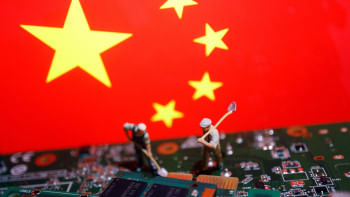How the Liangzhu model is challenging Silicon Valley’s AI dominance

In a quiet suburb on the outskirts of Hangzhou, the capital of China's Zhejiang province, something amazing is happening. This modest village is at the heart of China's AI revolution, offering technological innovation that is distinctly different from what the world is used to seeing in Silicon Valley. Here, innovators and entrepreneurs spend hours discussing ideas over endless cups of tea. This is Liangzhu.
The Liangzhu model, as it is being called, represents something fundamentally distinct from what is seen elsewhere. While Silicon Valley operates on the principle of disruption through market forces and private investment, Liangzhu thrives on a blend of academic excellence, community collaboration, and strategic state support, creating an entirely new playbook for technological advancement. But how does it work?
At the core of Liangzhu's success is top-tier education, backed by nearby Zhejiang University. This university has nurtured some of China's most innovative tech leaders, including Liang Wenfeng, the founder of DeepSeek. His transition, from engineering student to AI pioneer, demonstrates how a strong technical education, combined with entrepreneurial spirit, can lead to breakthrough innovations. DeepSeek is one of the Six Tigers, China's leading AI startups, all of which are based in Hangzhou, emerging from the bustling tea houses of Liangzhu.
Holding warm teacups, entrepreneurs exchange ideas, investors seek talent, and partnerships form through casual conversations. This informal networking fosters an ecosystem where knowledge flows through the community's natural social fabric. The tea-drinking tradition is more than just a social ritual; it's a mindful act of slowing down that encourages deeper thinking and relationship-building. While Silicon Valley races ahead with an eye on the upcoming quarterly earnings report, Liangzhu advances through genuine human connection and long-term vision.
The Liangzhu model benefits from coordinated support from both large corporations and the government. Companies like Alibaba, SMIC and Huawei not only provide funding but also offer market access, technical expertise, and strategic guidance. This creates a virtuous cycle where startups have clear paths to grow, and established companies gain access to cutting-edge innovation. Local authorities offer tax breaks and subsidies to attract tech startups, a strategy that has helped seed hundreds of companies. This nuanced policy support fosters innovation while allowing market forces to determine winners and losers.
DeepSeek embodies the sustainable mindset that the Liangzhu ecosystem promotes. The company's success is not just about creating competitive AI models; it's about doing so effectively and sustainably. While US AI firms spend billions in venture capital, DeepSeek has delivered comparable results with far fewer resources. This efficiency-focused approach underscores the Liangzhu model's emphasis on sustainable innovation rather than pursuing growth at any cost.
The true strength of the Liangzhu model lies in its synergy with Shenzhen, a city in southeastern China in Guangdong province. While Liangzhu excels in AI research and development, Shenzhen offers a seamless supply chain and highly efficient production line. This creates a strong complementary relationship: AI innovations in Liangzhu's tea houses and university labs can be rapidly prototyped and mass-produced in Shenzhen's factories. This enables AI companies to bring products to market faster and more cost-effectively, while maintaining close control over their supply chains and intellectual property.
The Liangzhu model has profound geopolitical implications. It gives China the resilience it needs in the race for global technological dominance; it doesn't depend on foreign investment or technology transfer, reducing the impact of Washington's sanctions. This model signifies more than just a new idea; it embodies a different approach to innovation itself. While Silicon Valley champions the solo genius entrepreneur, Liangzhu stresses collective intelligence and teamwork. Whereas Silicon Valley focuses on market disruption, Liangzhu emphasises technological progress that supports broader social and economic objectives.
This difference in approach could be crucial in the AI race. Artificial intelligence requires substantial computational resources and expertise, and its success ultimately depends on integration with existing systems and societal acceptance. The Liangzhu model's focus on gradual, consensus-driven innovation might be better suited for deploying AI technologies that genuinely improve people's lives rather than merely generating investor profits.
The rivalry between Silicon Valley and Liangzhu will likely shape the next stage of global technological progress. The key question isn't which model will "win," but how both will evolve and what hybrid approaches might emerge. In an era of flashy IPOs and billion-dollar valuations, the Liangzhu model reminds us that the most meaningful innovations often occur behind the scenes, through careful and patient effort to create something lasting. As the AI race intensifies, this approach could become its most significant competitive advantage.
In 2006, archaeologists uncovered remains of a Neolithic civilisation at the site of Liangzhu. Is this 3,000-year-old civilisation making a comeback to reclaim its status as a global leader?
Dr Sayeed Ahmed is a consulting engineer and CEO of Bayside Analytix, a technology-focused strategy and management consulting organisation.
Views expressed in this article are the author's own.
Follow The Daily Star Opinion on Facebook for the latest opinions, commentaries and analyses by experts and professionals. To contribute your article or letter to The Daily Star Opinion, see our guidelines for submission.

 For all latest news, follow The Daily Star's Google News channel.
For all latest news, follow The Daily Star's Google News channel. 











Comments